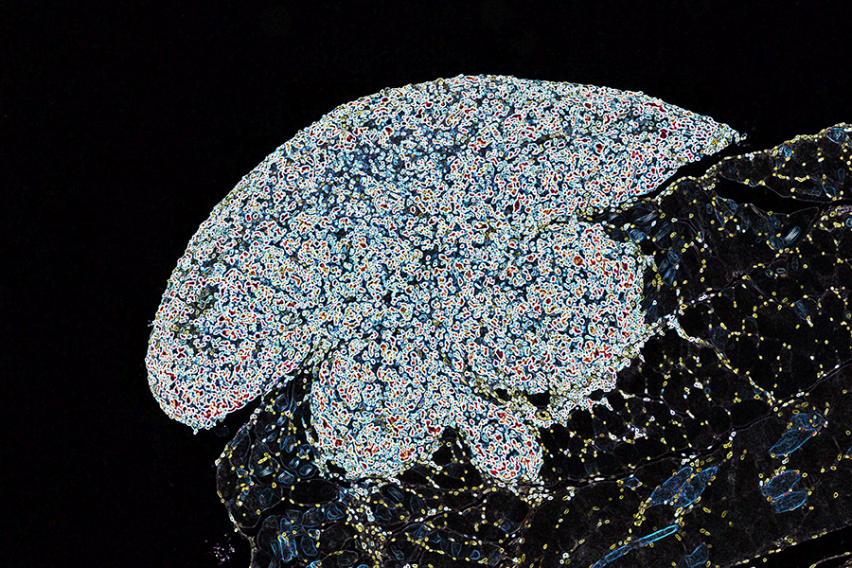
In this ovarian tumor, tissues are stained with a molecule that binds to cells that are rapidly growing and multiplying (colored white). The image comes from a larger project to understand and exploit the genetic weaknesses of tumors in various disease models. (Credit: Erik C. Dreaden, Yi Wen Kong, Michael Yaffe, Paula T. Hammond, 2017 Images Award Winner)
MIT Koch Institute
May 8, 2023
A new approach from the Yaffe lab, in collaboration with former Koch Institute Clinical Investigator Scott Floyd, can be used to identify the specific protein kinases, or biochemical ‘switches,’ that control interactions with 14-3-3 proteins. This class of proteins controls cellular response to stress and DNA damage, as well as cell migration, apoptosis, and other key mechanisms that play critical roles in cancer development, progression and treatment response.
In a recent study published in Frontiers in Molecular Biosciences, the researchers piloted their approach, which relies on high-density protein filter arrays. They identified PABPC1 as the necessary molecule whose phosphorylation results in 14-3-3 binding for Chk1 and MAPKAP Kinase-2 (MK2) in vitro, and for MK2 in vivo. The Chk1 pathway mediates cell cycle progression and DNA damage repair; MK2 plays a role in the latter as well, and is also a critical regulator of inflammation.
This work was supported in part by the Charles and Marjorie Holloway Foundation and a fellowship from the S. Leslie Misrock (1949) Frontier Research Fund for Cancer Nanotechnology.